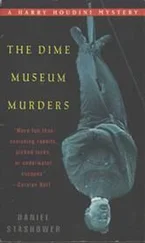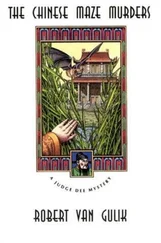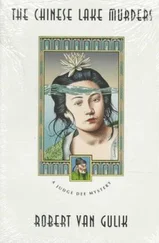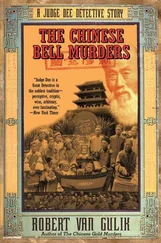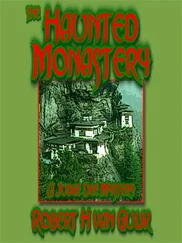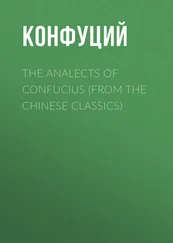A. feature all old Chinese detective stories had in common was that the role of detective was always played by the magistrate of the district where the crime occurred.
This official was in charge of the entire administration of the district under his jurisdiction, usually comprising one walled city and the countryside around it for fifty miles or so. The magistrate's duties were manifold. lie was fully responsible for the collection of taxes, the registration of births, deaths and marriages, keeping up to date the land registration, the maintenance of the peace, etc., while as presiding judge of the local tribunal he was charged with the apprehension and punishing of criminals and the hearing of all civil and criminal eases. Since the magistrate thus supervised practically every phase of the daily life of the people, he is commonly referred to as the "father-andrnother official."
The magistrate was a permanently overworked official. He lived with his family in separate quarters right inside the compound of the tribunal, and as a rule spent his every waking hour upon his official duties.
The district magistrate was at the bottom of the colossal pyramidal structure of ancient Chinese government organization. He had to report to the prefect, who supervised twenty or more districts. The prefect reported to the provincial governor, who was responsible for a dozen or so prefectures. The governor in his turn reported to the central authorities in the capital, with the emperor at the top.
Every citizen in the empire, whether rich or poor and regardless of his social background, could enter official life and become a district magistrate by passing the literary examinations. In this respect the Chinese system was already a rather democratic one at a time when Europe was still under feudal rule.
A magistrate's term of office was usually three years. Thereafter he was transferred to another district, to be in due time promoted to prefect. Promotion was selective, being based solely on actual performance; less gifted men often spent the greater part of their lives as district magistrates.
In exercising his general duties the magistrate was assisted by the permanent personnel of the tribunal, such as the constables, the scribes, the warden of the jail, the coroner, the guards and the runners. Those, however, only performed their routine duties. They were not concerned with the detection of crimes.
This task was performed by the magistrate himself, assisted by three or four trusted helpers; these he selected at the beginning of his career and they accompanied him to whatever post he went. These assistants were placed over the other personnel of the tribunal. They had no local connections and were therefore less liable to let themselves be influenced in their work by personal considerations. For the same reason it was a fixed rule that no official should ever be appointed magistrate in his own native district.
The present novel gives a general idea of ancient Chinese court procedure. When the court was in session, the judge sat behind the bench, with his assistants and the scribes standing by his side. The bench was a high table covered with a piece of red cloth that hung down in front to the floor of the raised dais.
The constables stood facing each other in front of the dais, in two rows on left and right. Both plaintiff and accused had to kneel between these two rows on the bare flagstones and remain so during the entire session. They had no lawyers to assist them, they might call no witnesses and their position was generally not an enviable one. The entire court procedure was in fact intended to act as a deterrent, impressing the people with the awful consequences of getting involved with the law. As a rule there were every day three sessions of the tribunal, in the morning, at noon and in the afternoon.
It was a fundamental principle of Chinese law that no criminal could be pronounced guilty unless he confessed to his crime. To prevent hardened criminals from escaping punishment by refusing to confess even when confronted with irrefutable evidence, the law allowed the application of legal severities, such as beating with whip and bamboo, and placing hands and ankles in screws. Next to these authorized means of torture magistrates often applied more severe kinds. If, however, an accused received permanent bodily harm or died under such severe torture, the magistrate and the entire personnal of his tribunal were punished, often with the extreme penalty. Most judges, therefore, depended more upon their shrewd psychological insight and their knowledge of their fellow men than on the application of severe torture.
All in all, the ancient Chinese system worked reasonably well. Sharp control by the higher authorities prevented excesses, and public opinion acted as another curb on wicked or irresponsible magistrates. Capital sentences had to be ratified by the throne and every accused could appeal to the higher judicial instances, going up as far as the emperor himself. Moreover, the magistrate was not allowed to interrogate the accused in private. All his hearings of a ease, including the preliminary examination, had to be conducted in the public sessions of the tribunal. A careful record was kept of all proceedings and these reports had to be forwarded to the higher authorities for their inspection.
"Judge Dee" is one of the great ancient Chinese detectives. He was a historical person, one of the well-known statesmen of the T'ang dynasty. His full name was Ti Jen-chieh, and he lived from A.D. 630 till 700. In his younger years, while serving as magistrate in the provinces, he acquired fame because of the many difficult criminal cases which he solved. It is chiefly because of his reputation as a detector of crimes that later Chinese fiction has made him the hero of a number of crime stories which have only very slight foundation in historical fact, if any.
Later he became a minister of the Imperial Court and through his wise counsels exercised a beneficial influence on affairs of state; it was because of his energetic protests that the Empress Wu, who was then in power, abandoned her plans to appoint to the throne a favorite instead of the rightful heir apparent.
In most Chinese detective novels the magistrate is at the same time engaged in the solving of three or more totally different cases. This interesting feature I have retained in the present novel, writing up the three plots so as to form one continuous story. In my opinion, Chinese crime novels in this respect are more realistic than ours. A district had quite a numerous population; it is only logical that often several criminal cases had to be dealt with at the same time.
I have adopted the custom of Chinese Ming writers to describe in their novels men and life as during the sixteenth century, although the scene of their stories is often laid several centuries earlier. The same applies to the illustrations, which reproduce customs and costumes of the Ming period rather than those of the T'ang dynasty. Note that at that time the Chinese did not smoke, neither tobacco nor opium, and did not wear the pigtail-which was imposed on them only after A.D. 1644 by the Manchu conquerors. The men wore their hair long and done up in a topknot. Both outdoors and inside the house they wore caps.
The solution of the Murder of the Magistrate was taken by me from one of the original Chinese Judge Dee stories, viz. that of the Poisoned Bride. This tale will be found in the Chinese novel Wu-tset'ien-szu-ta-ch'i-an, which I published in English translation under the title of Dee Goong An (Tokyo, 1949). There a bride is accidentally poisoned on the wedding night by the venom of an adder which nestled in the moldy rafter in the kitchen, above the spot where the tea water was always boiled. When the hot steam curled up, the adder would push its head out and release its venom into the water. I modified the plot, but borrowed unchanged the manner in which judge Dee discovers the truth, namely by observing dust fallen from the ceiling into his teacup (cf. Dee Goong An, page 159). Mr. Vincent Starrett has pointed out already in his excellent essay, "Some Chinese Detective Stories" (ín: Bookman's Holiday, Random House: New York, 1942) that this motif is reminiscent of Sir Conan Doyle's story "The Speckled Band," which was written at least a hundred years later.
Читать дальше




